Wisconsin is a state known for its beautiful landscapes and diverse wildlife. A lot of the state is comprised of majestic forests with several different owners. This article will examine some of these top landowners in Wisconsin and explore their stories. We’ll also discuss why they choose to invest in such large parcels of land and what it takes to be a successful landowner.
Let’s dive into who owns the most land throughout all of Wisconsin.
1. Wisconsin County Forests Association — 2.4 Million Acres

The Wisconsin County Forests Association provides leadership to local governments.
©Jeff the quiet / CC0 – License
The Wisconsin County Forests Association (WCFA) is a non-profit organization established in 1968. They manage 2.4 million acres of the state’s forest.
The organization provides leadership and support to local governments. For instance, each county forest has its 15-year plan that focuses on sustaining Wisconsin’s natural resources. The WCFA also focuses on providing public opportunities. You can explore the state’s fantastic forests and experience Wisconsin’s wild beauty first-hand!
How did the WCFA begin? In the late 1800s and early 1900s, Wisconsin saw a massive timber-cutting and land-clearing boom. This led to Wisconsin becoming a leader in timber production. However, by 1915, all the forests were gone. Getting new settlers to come and convert these cutover areas wasn’t easy.
Unable to pay their taxes, landowners had no choice but to abandon their lands, which would leave counties cash-poor. Fortunately, the State Legislature introduced the Forest Crop Law and County Forest Reserve Law. The law allows counties to acquire those tax-delinquent lands and turn them into county forests.
2. Federal Government — 1.9 Million Acres
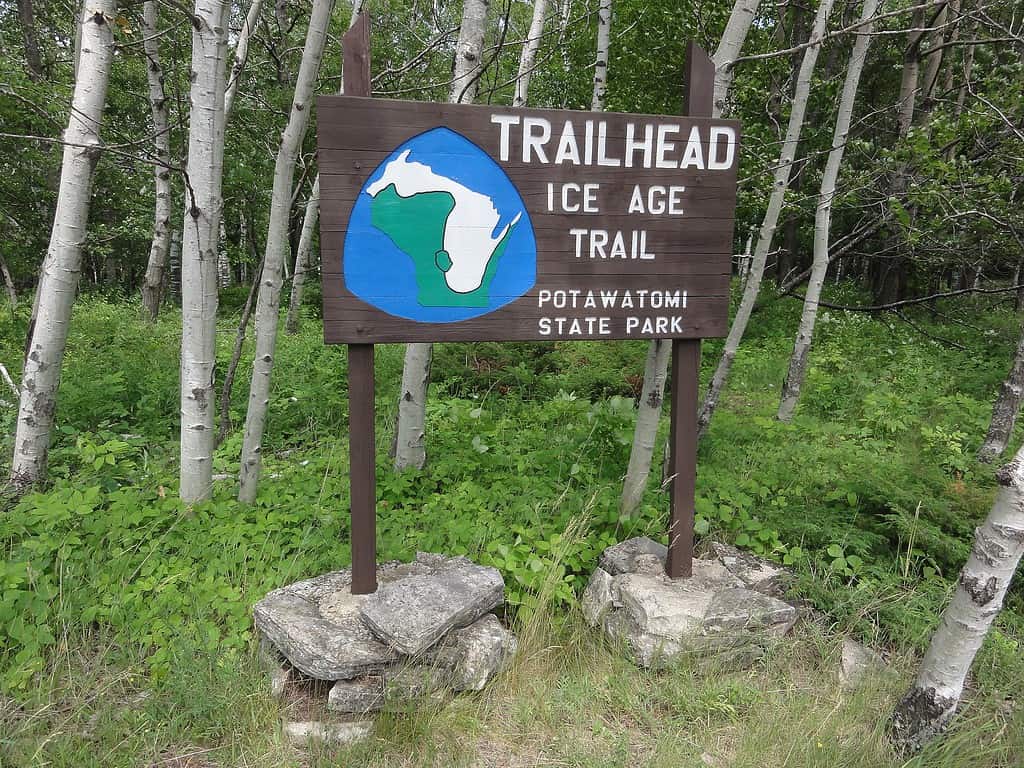
The federal government manages 5.33% of Wisconsin’s total acreage.
©Bart Everson from New Orleans, Louisiana, USA / CC BY 2.0 – License
The federal government is one of the top landowners in Wisconsin, managing 5.33% of the state’s total acreage. That means 1.9 million acres are under its jurisdiction.
Federal grant programs help keep the state’s lands available for public use. The federal government also works hard to promote conservation initiatives. For instance, The Land and Water Conservation Fund (LWCF) offer locals the chance to make a difference. There are also local volunteer opportunities with the Recreational Trails Program (RTP).
The Land and Water Conservation Fund
In 1965, Congress enacted the Land and Water Conservation Fund (LWCF) grant program. Their mission is to provide high-quality outdoor recreation. Thanks to its 50% cost-share initiative, a whopping 1800 projects have been a success in the state. In addition, over $81 million were invested by the federal government.
Recreational Trails Program
The Recreational Trails Program (RTP) federal grant program helps keep trails safe. Organizations that want to update an existing bike trail must apply for funding through the RTP. Eligible parties can receive a sizable reimbursement of their project costs. Since RTP funds aren’t applicable for condemnation, organizations can ensure the trails remain available for outdoor fun!
3. Wisconsin’s Department of Natural Resources — 1.6 Million Acres
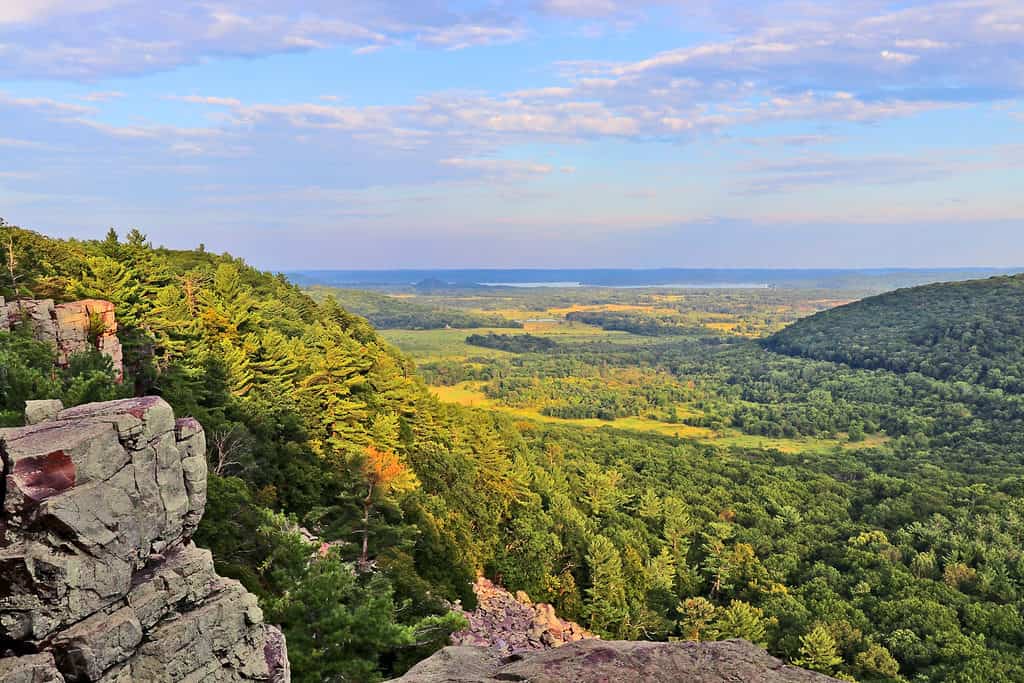
Devil’s Lake State Park is one of the parks under the Wisconsin Department of Natural Resources’ management.
©MarynaG/Shutterstock.com
Since its inception in 1967, the Wisconsin Department of Natural Resources (WDNR) has been a leader in conserving the state’s land. The agency owns and manages over 1.6 million acres of properties for the citizens of Wisconsin. Over 5.8 million residents benefit from the recreational areas made available by the lands and the diversity of habitats.
The WDNR works hard to manage water resources, parks, forests, fish populations, and more. They focus on creating sustainable environments while also encouraging public interaction. Outdoor opportunities, such as fishing, camping, and hiking, ensure Wisconsin remains a top destination!
As far as resources go, the agency helps preserve the state’s natural resources, such as crushed stone, sand, and gravel. One of the ways they do this is by preventing development at key reservation sites.
4. Land Trusts — 796,902 Acres
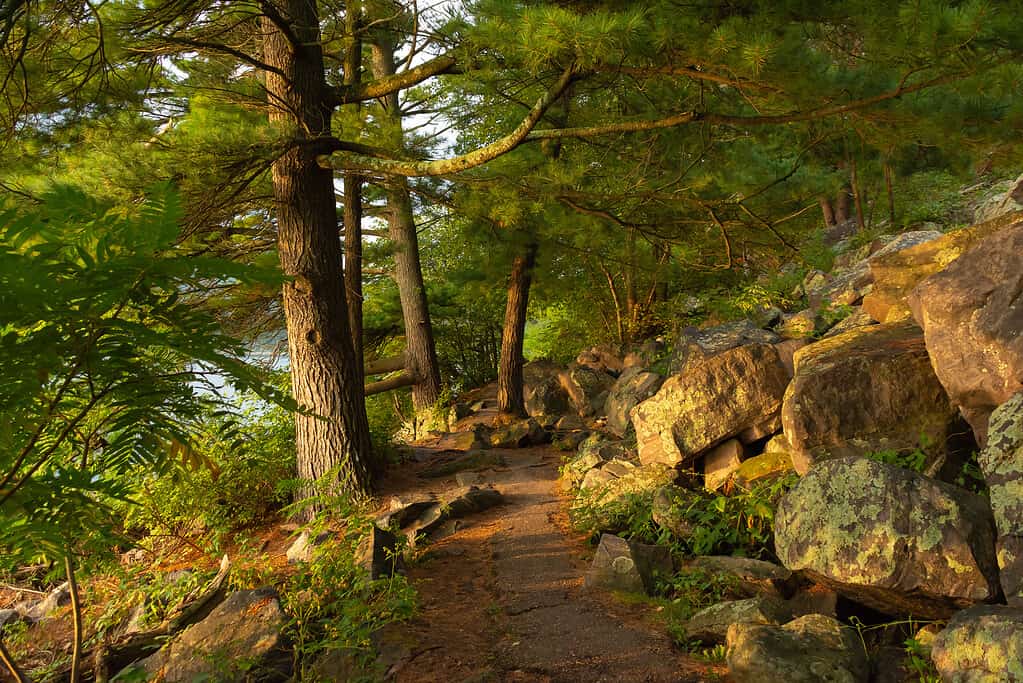
Land trusts in Wisconsin provide numerous hiking trails in the state.
©EJ_Rodriquez/iStock via Getty Images
Land trusts in the Badger State have already conserved an incredible 796,902 acres of private land. They’ve provided 932 miles of trails out of that land for public use. One of the most prominent trusts taking action is the Northeast Wisconsin Land Trust.
Northeast Wisconsin Land Trust (NWLT)
The Northeast Wisconsin Land Trust (NWLT) cares about Wisconsin’s biodiversity. Founded in 1996, the non-profit organization has actively protected over 6,000 acres of land across 12 counties in the region. For instance, NWLT proudly manages Puchyan Prairie, a 50-acre site full of new and unique habitats for local wildlife.
Puchyan Prairie
One of the most popular public preserves in northeast Wisconsin is Puchyan Prairie and for a good reason. This natural area is home to a striking mosaic of wetland communities. When you’re there, it’s hard to believe you’re still in Wisconsin.
The prairie comprises wet and dry-mesic (moist) sand prairies, sedge meadows, and marsh, all surrounded by the Puchyan River. Prescribed burns and invasive species removal are some ways NWLT protects existing habitats.
5. Board of Commissioners of Public Land — 74,000 Acres
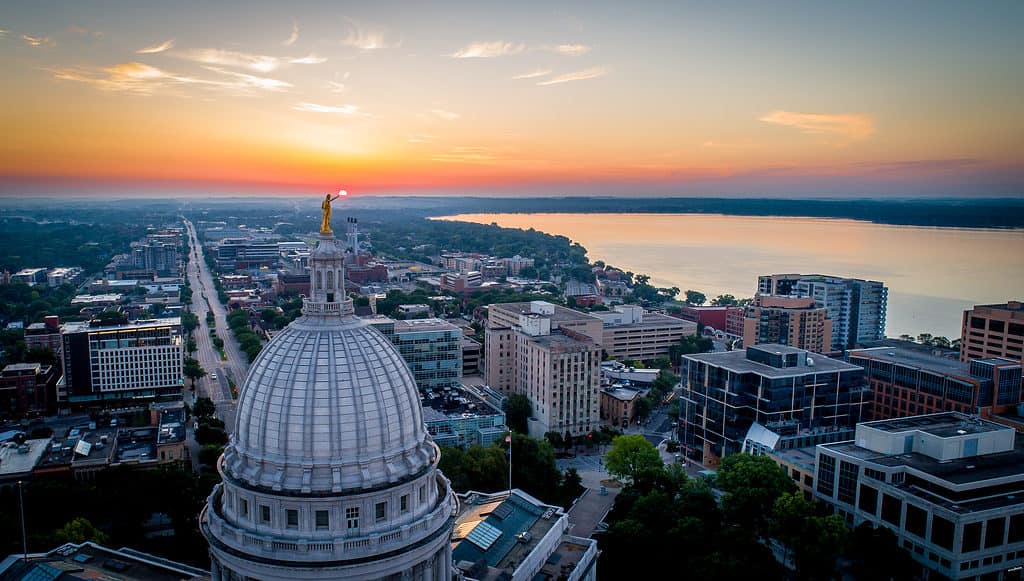
The Wisconsin Board of Commissioners of Public Lands has been in operation since 1833.
©Szymon Raczkowiak/Shutterstock.com
Since 1833, the Wisconsin Board of Commissioners of Public Lands (BCPL) has protected Wisconsin. Composed of the State Treasurer, Attorney General, and Secretary of State, BCPL has managed over 10 million acres of Trust Lands. BCPL even helps generate income to fund public school libraries.
6. Devil’s Hole Ranch — 4,500 Acres

Devil’s Hole Ranch is home to herds of Angus cattle.
©Nordroden/Shutterstock.com
Devil’s Hole Ranch is a remarkable 4,500-acre family-owned ranch in Wisconsin. The ranch is nestled in Wisconsin’s Driftless region’s hills and deep valleys.
The Menn Family has been successfully running the ranch for generations. The large location is home to Angus feeder calves and ranch-bred and trained quarter horses. They also sell the tastiest fresh garlic!
7. Rosendale Dairy Farm — 2,800 Acres
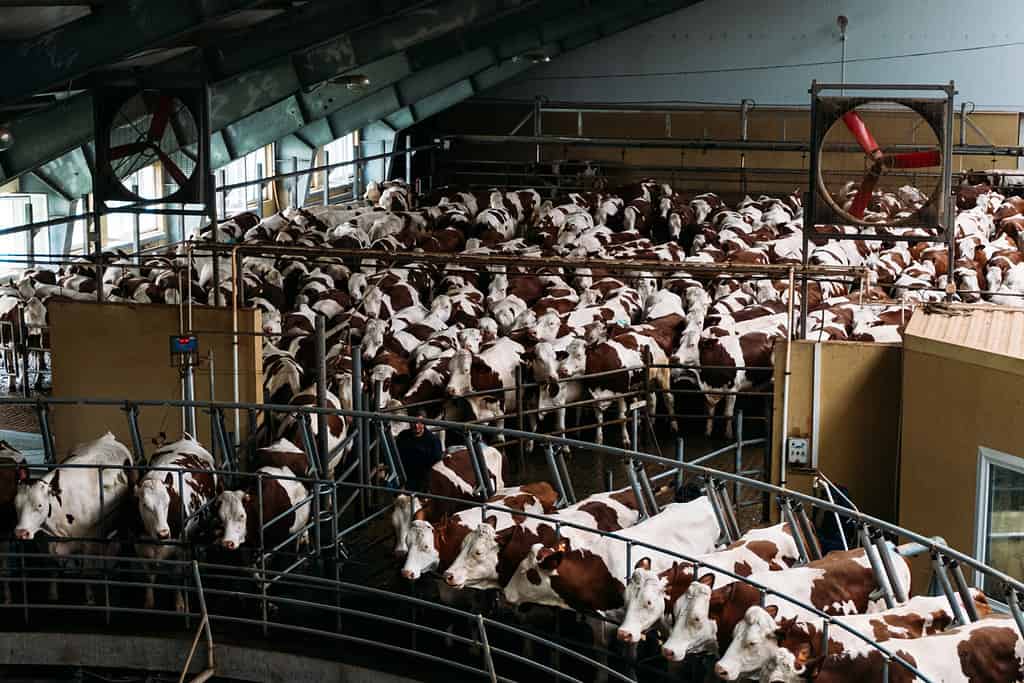
Rosendale Dairy Farm produces 78,000 gallons of milk daily.
©Dobrovizcki/Shutterstock.com
Did you know that Rosendale Dairy Farm, located in Pickett, WI, is the largest dairy farm in the state? Founded in 1999 by three passionate co-founders—Jim Ostrom, John Vosters, and Todd Willer—Rosendale is a big success. With 8,400 milking cows producing 78,000 gallons of milk daily, it’s no wonder this farm is a pillar of Wisconsin’s milk production.
On top of that, the factory at Rosendale produces and stores up to 90 million gallons of manure and wastewater a year. That’s right, the secondary product Rosendale Dairy Farm is famous for is manure. This natural fertilizer is essential in keeping the farm running and providing top-notch milk products.
8. Badger Hollow Solar Farm — 2,200 Acres
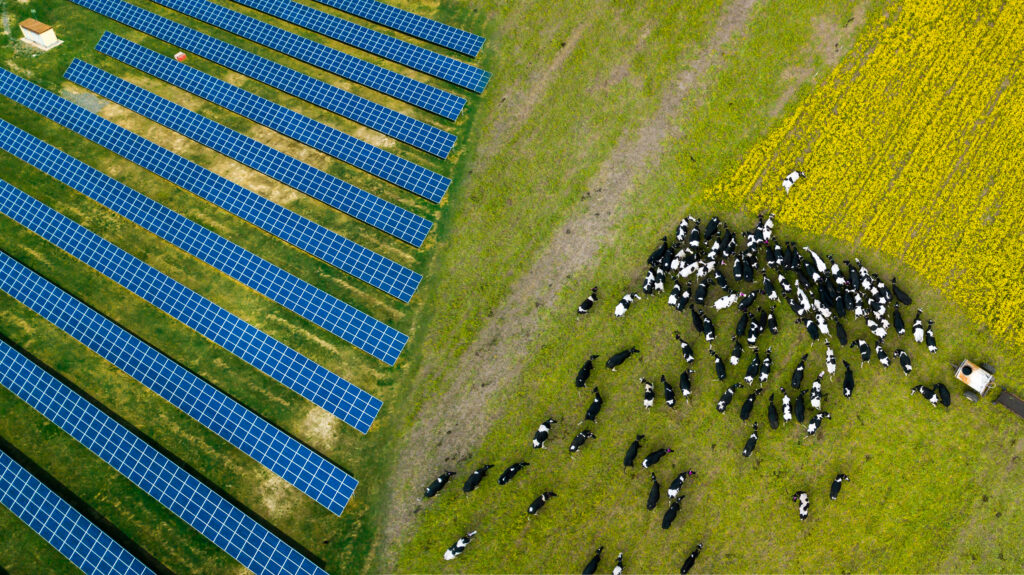
Solar Farms provides residents of Wisconsin with job opportunities.
©DROPERDER/Shutterstock.com
Badger Hollow Solar Farm is a shining example of the power of sustainability! Founded in 2008, this 2,200-acre solar farm was established by Madison Gas and Electric and WI Public Service Cooperation. The forward-thinking venture strives to find innovative ways to create energy.
The Badger Hollow Solar Farm is set to revolutionize Wisconsin’s energy production. Plans could extend their operation by over 1,000 acres. As Wisconsin’s largest solar farm, they’re an inspiration for environmentally friendly energy solutions! The project is also helping provide residents with great new job opportunities.
9. Habelman Cranberry Farm — 700 Acres
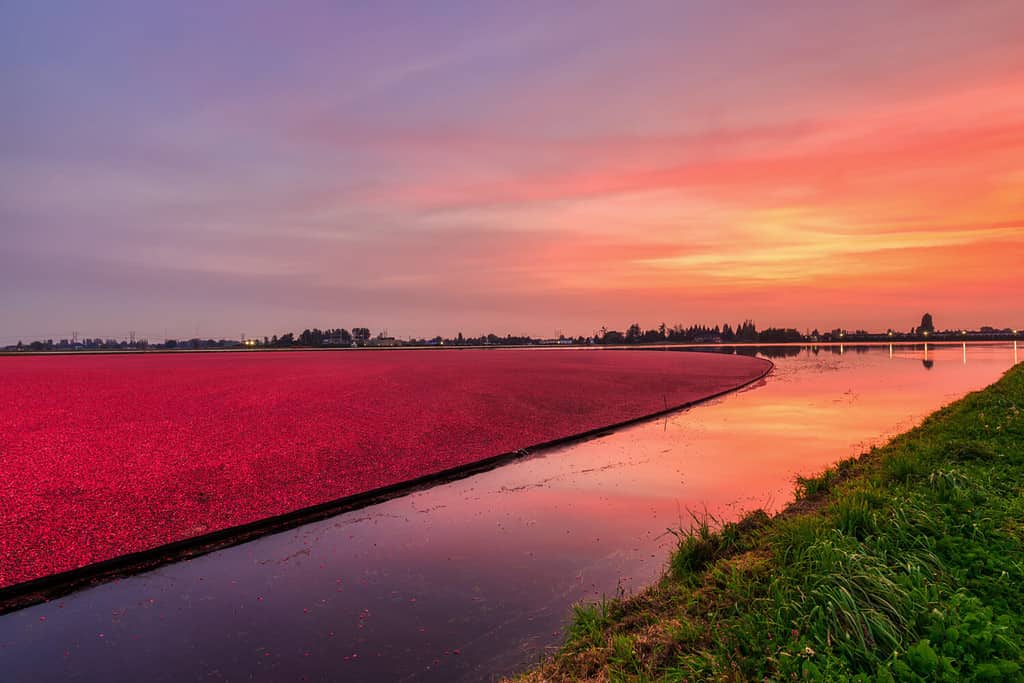
The Habelman Brothers Cranberry Farm can produce up to 130,000 barrels of cranberries yearly.
©JamesChen/Shutterstock.com
The unique Habelman Brothers Cranberry Farm is the perfect example of what a little hard work, dedication, and family tradition can accomplish.
The farm can produce an incredible 100 to 130 thousand barrels of fresh cranberries yearly. That’s up to 13 million pounds per harvest season! Of those delicious berries, up to 9 million are packaged on-site for the fresh market.
In 1907, Edward Habelman envisioned creating a cranberry farm that would stand the test of time. He made the brave choice to trade his land for 1/2 interest in a cranberry marsh was smart. Seven years later, he secured a loan from a bank to purchase the remaining 1/2 interest of the business. With hard work and determination, Edward and his sons nearly doubled the farm’s land, growing 13 acres into 25.
Fast-forward to today, and you have the Habelman Bros. Their three properties combine 700 acres, which are used to produce tasty cranberries. Because of their dedication to delivering quality, the Habelman brothers are still going strong after 100 years.
What The Future Holds for Wisconsin’s Forests
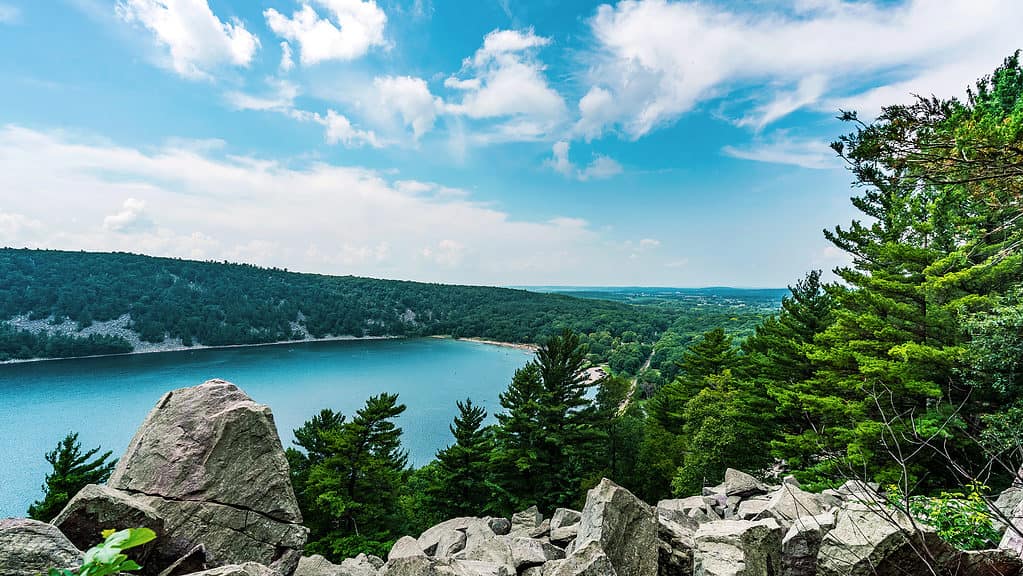
Forests in Wisconsin are growing, despite the threats of climate change and invasive species.
©Sarah Quintans/Shutterstock.com
Wisconsin’s forests face many challenges, but the future holds promise. Despite threats from invasive species, diseases, and climate change, the state’s forests are growing! The growing woodlands feature beautiful species such as aspen-birch, maple-basswood, and spruce-fir. And for those who prefer warmer forests, pine and oak-pine are the predominant species in the state’s central area.
The white pine, red maple, and red pine have also been thriving. The white pine numbers have tripled, and red maple and red pine trees have doubled! Meanwhile, ash, white oaks, hemlock, and sugar maple trees steadily increase yearly. Overall, the future looks bright for Wisconsin’s flourishing forests.
Summary of the 9 Largest Landowners in Wisconsin
Here is a list of the 9 largest landowners in the state of Wisconsin:
| Rank | Landowner | Land Size |
|---|---|---|
| 1 | Wisconsin County Forests Association | 2.4 million acres |
| 2 | Federal Government | 1.9 million acres |
| 3 | Wisconsin’s Department of Natural Resources | 1.6 million acres |
| 4 | Land Trusts | 796,902 acres |
| 5 | Board of Commissioners of Public Land | 74,000 acres |
| 6 | Devil’s Hole Ranch | 4,500 acres |
| 7 | Rosendale Dairy Farm | 2,800 acres |
| 8 | Badger Hollow Solar Farm | 2,200 acres |
| 9 | Habelman Cranberry Farm | 700 acres |
Final Thoughts on Top Landowners in Wisconsin
That’s a quick look at the top 9 landowners in Wisconsin. They’re an impressive bunch. The Federal government is doing a great job at providing outdoor public spaces. And don’t forget about the Wisconsin County Forests Association (WCFA). They’re a prime example of how environmental conservation and economic growth can go hand-in-hand.
The Habelman Brothers Cranberry Farm is an impressive example of the power of hard work, dedication, and family tradition. And then there’s the recent Badger Hollow Solar Farm. This project shows how powerful and beneficial renewable energy sources can be. The location is also providing a lot of job opportunities.
Finally, the land trusts do their part to keep the landscape beautiful. The publicly managed spaces they maintain are stunning. If you’re ever in Wisconsin, you should check out Puchyan Prairie!
There are a lot of fun things to learn about Wisconsin. Check out the articles below for more insightful tips about this incredible state.
Who Are the Largest Landowners in the United States?
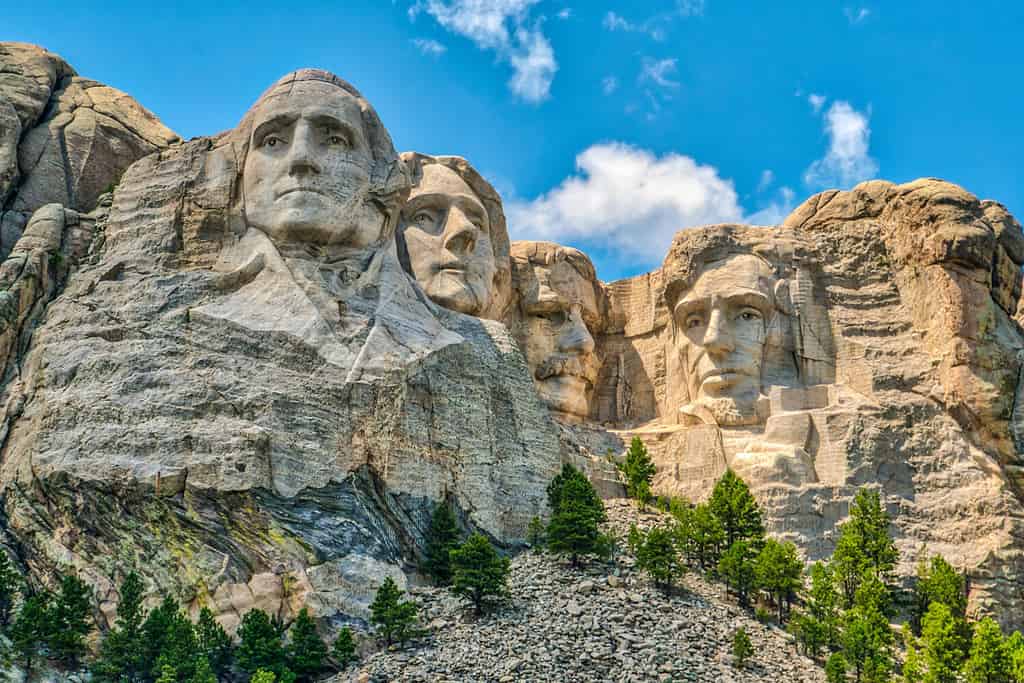
The U.S. Government is the largest landowner in the United States, owning approximately 640 million acres.
©Exploring and Living/Shutterstock.com
There are two worth mentioning as relating to the largest landowners in the United States. The first is probably pretty obvious-the U.S. Government. Shared between the National Park Service, the Forest Service, the Bureau of Land Management, the Fish and Wildlife Service, and the Department of Defense, over 640 million acres of U.S. land are owned by the Federal Government. That’s roughly ⅓ of all the land in the United States, which averages out to a total of 2.3 billion acres.
The largest landowner in the United States other than the Federal Government is the Emmerson family, whose patriarch Red Emmerson founded Sierra Pacific Industries in Anderson, California. This company is focused on lumber production, operating a number of sawmills. The Emmerson family owns approximately 2,330,000 acres of land.
The other top largest landowners in the U.S. are:
- John Malone–2,200,000 acres (land committed to conservation)
- The Reed Family–2,100,000 acres (lumber production and forests)
- Ted Turner–2,000,000 acres (ranching and agricultural research)
- Stan Kroenke–1,627,500 acres (farmland, ranches, renewable energy)
The photo featured at the top of this post is © Alexander Lukatskiy/Shutterstock.com
Sources
- Stacker, Available here: https://www.wearegreenbay.com/news/local-news/see-how-much-land-in-wisconsin-is-owned-by-the-federal-government/
- BCPL, Available here: https://bcpl.wisconsin.gov/Pages/PublicLandOwnership.aspx
- NWLT, Available here: https://www.newlt.org/
Thank you for reading! Have some feedback for us? Contact the AZ Animals editorial team.






